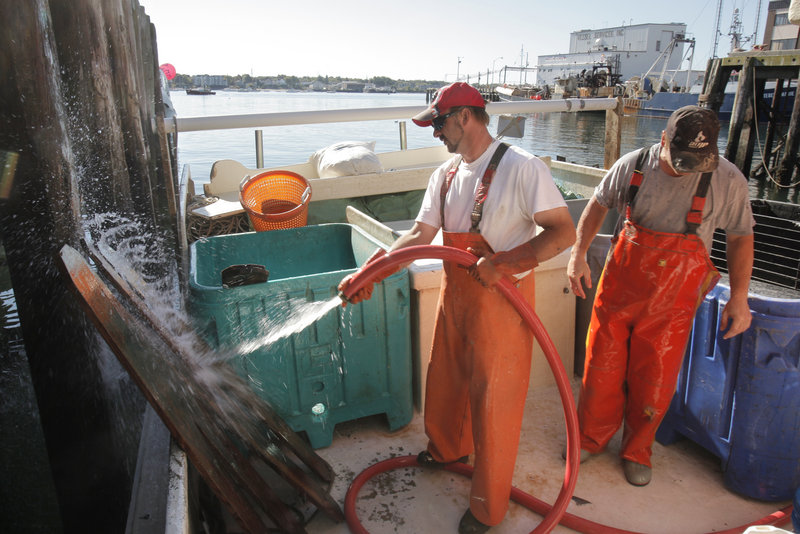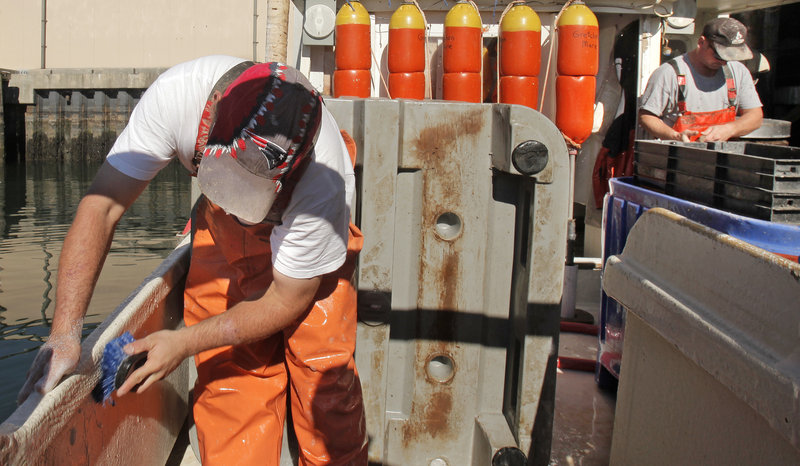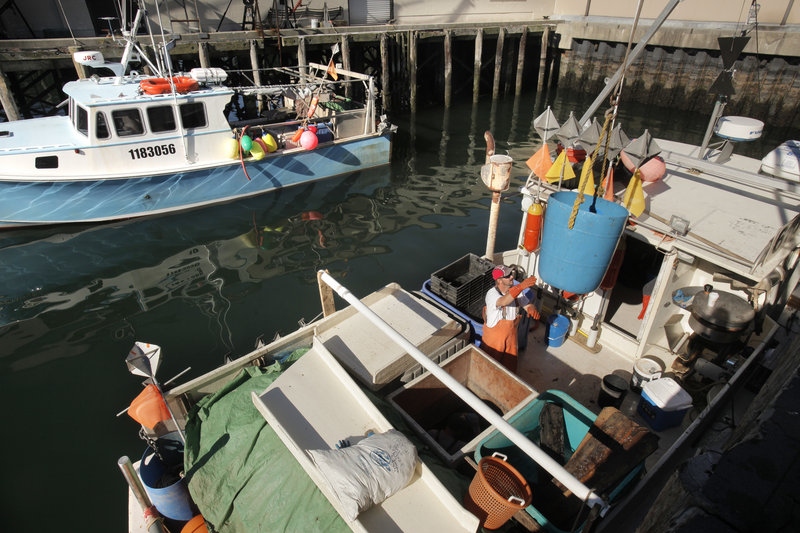Fishing for scallops or groundfish in the Atlantic is more dangerous than fishing for king crabs off Alaska, says a new federal study.
The National Institute for Occupational Safety and Health has found that the highest death rates for commercial fishermen — whose occupation is one of the most dangerous in the country — are among groundfishermen and scallopers.
With safety improvements made by Alaska’s crab industry in recent decades, Alaskan crab is no longer the deadliest catch, despite the image conveyed by the “Deadliest Catch” cable TV reality series, which chronicles the working lives of Alaskan crab fishermen.
In order to make valid comparisons, the study calculated death rates per 100,000 full-time equivalent workers, or FTEs, in each segment of the industry. From 2000 to 2009, the rates were 600 deaths per 100,000 groundfishermen and 425 deaths per 100,000 scallop fishermen in the Atlantic, according to the study. That compares with a rate of 260 deaths per 100,000 in the Alaskan crab fishery.
The actual numbers over the period showed there were 4,340 FTE groundfishermen with 26 fatalities, 10,384 scallop fishermen with 44 deaths and 4,658 Alaskan crab fishermen with 12 deaths.
Disasters such as sinkings, caused by instability and flooding, are responsible for the fatalities, said Jennifer Lincoln, an injury epidemiologist and the author of the study. Snagged gear is another factor in scalloping fatalities.
“So prevention efforts should focus on those things,” Lincoln said.
Kevin Plowman, commercial fishing boat examiner for the Coast Guard in Maine, said about 10 percent of Maine’s 7,000-vessel commercial fishing fleet gets annual safety inspections. The reviews determine whether boats meet safety standards and are equipped with working immersion suits, life rafts and other safety gear.
Boats that were built before 1991 or are less than 79 feet long don’t have to be examined for stability. Plowman said most boats that sink are smaller than 79 feet.
Part of the problem, said Plowman, a member of the Maine Commercial Fishing Safety Council, is that Congress has been reluctant to exercise its authority over safety regulation and pass stricter requirements.
He said Maine has improved safety in the lobster fishery by taking steps such as requiring apprentice lobstermen to get safety training to qualify for full licenses.
Eighteen lobstermen died from 2000 to 2009 in New England, but the study did not calculate a death rate. The deaths generally occurred in falls overboard, caused when lobstermen got entangled in trap lines or got knocked over by gear.
Lincoln said the death rate among Alaskan crab fishermen once reached 770 per 100,000. The rate was more than halved after the Coast Guard required gear to be loaded properly before boats headed out. That sharply reduced sinkings.
One Maine ground fisherman said he was surprised by the study’s findings.
Jay Roberts of Portland, a crew member on the Gretchen Marie, which unloaded pollock, hake and cod at the Portland Fish Exchange on Thursday, said he had no illusions about the safety of his occupation.
He said he has lost family members and a couple of friends to fishing accidents, but he didn’t know that groundfishing was more dangerous than other fisheries.
“The weather and some of the regulations might have something to do with it, forcing us out farther,” Roberts said.
Mary Davis, who is studying safety compliance among Maine fishermen, said the cost of regulations aimed at protecting fish stocks has reduced what fishermen can afford for cold-water safety equipment.
“There are many pressures on these fisheries, and one of the things that goes first is safety,” said Davis, an assistant professor in Tufts University’s Department of Urban Environmental Policy and Planning and an adjunct faculty member at the University of Maine’s School of Economics.
Davis has found that Maine fishermen lack safety training. She has found that about 40 percent of the boats in Maine’s near-shore fishing fleet are out of compliance with safety regulations. And she found that many captains are unfamiliar with proper use of safety equipment, which often is broken.
Sixteen percent of the fishermen she interviewed said they didn’t know how to swim, which she said probably means the percentage is much higher because people tend to hide their inability to swim.
In general, Davis said, fishing captains rated the risk of fishing at 5.5 on a scale of 10 and said they believe that driving a car is more dangerous than fishing — though in reality fishing is much more dangerous.
Davis said she found another interesting characteristic of Maine fishermen.
“Many of them seem to do other risky jobs,” she said. “When they were not fishing, they were logging. They were volunteer firemen and truckers. They were not choosing easy desk jobs.”
Staff Writer Beth Quimby can be contacted at 791-6363 or at:
bquimby@pressherald.com
Send questions/comments to the editors.






Success. Please wait for the page to reload. If the page does not reload within 5 seconds, please refresh the page.
Enter your email and password to access comments.
Hi, to comment on stories you must . This profile is in addition to your subscription and website login.
Already have a commenting profile? .
Invalid username/password.
Please check your email to confirm and complete your registration.
Only subscribers are eligible to post comments. Please subscribe or login first for digital access. Here’s why.
Use the form below to reset your password. When you've submitted your account email, we will send an email with a reset code.